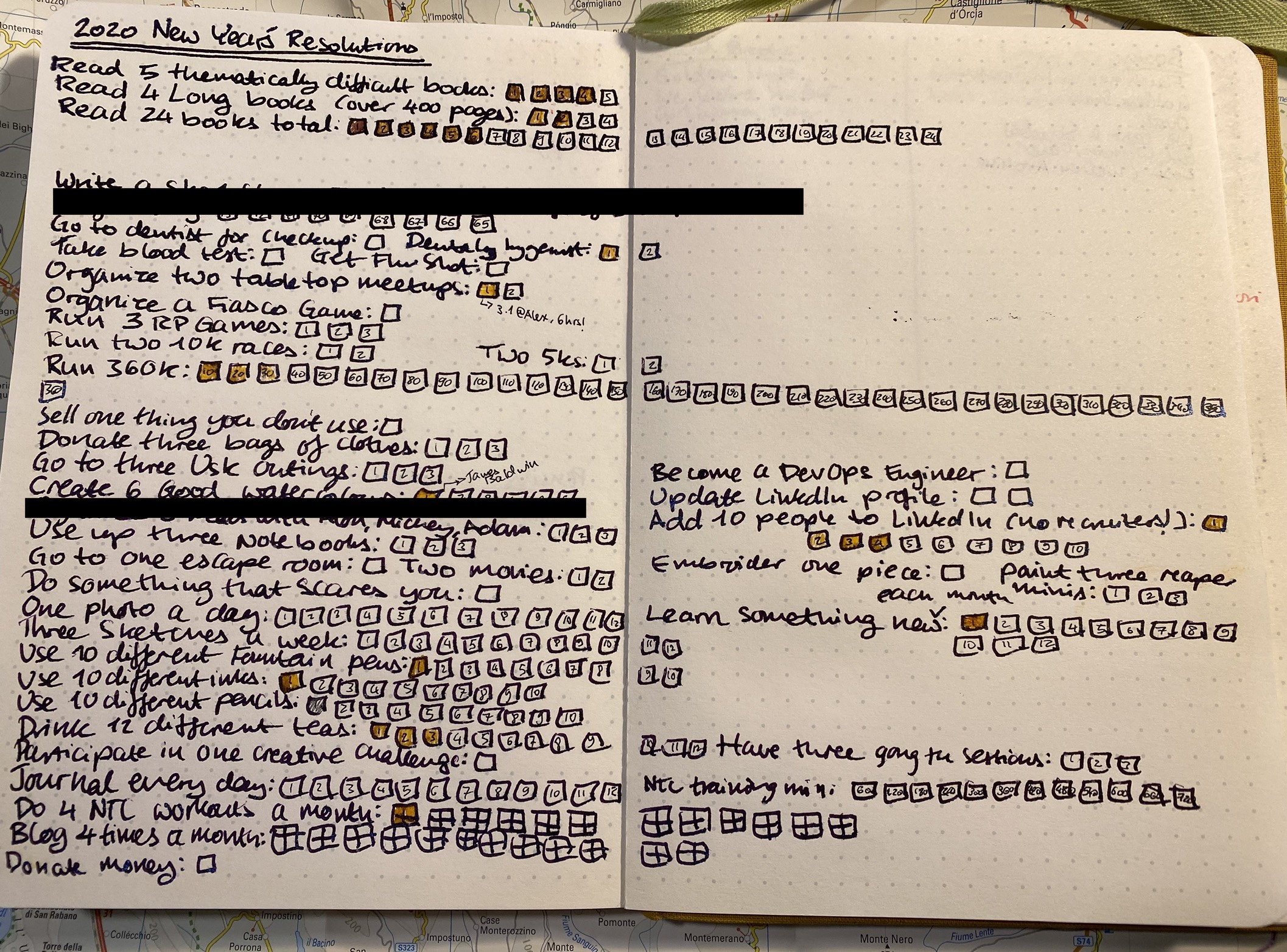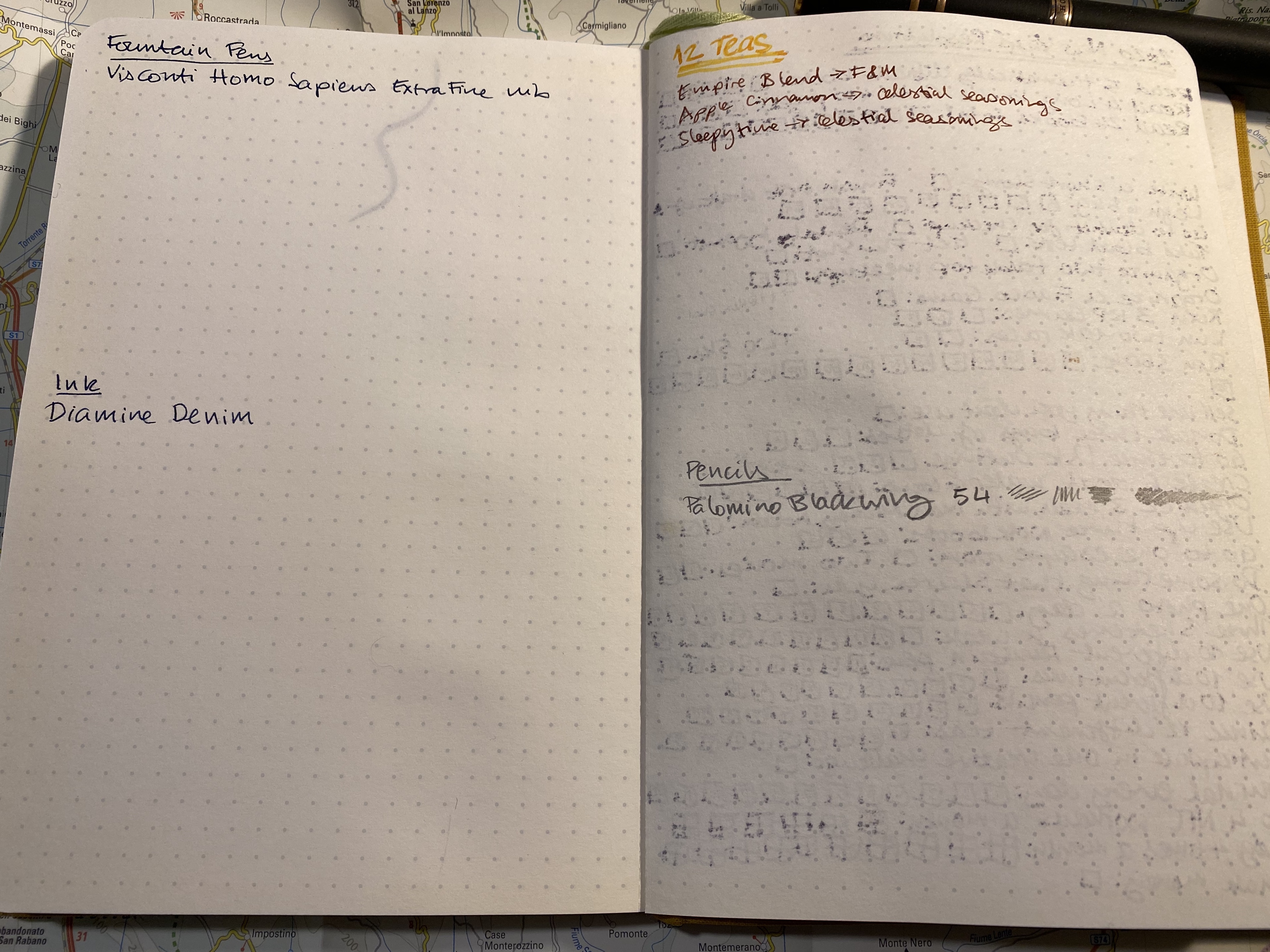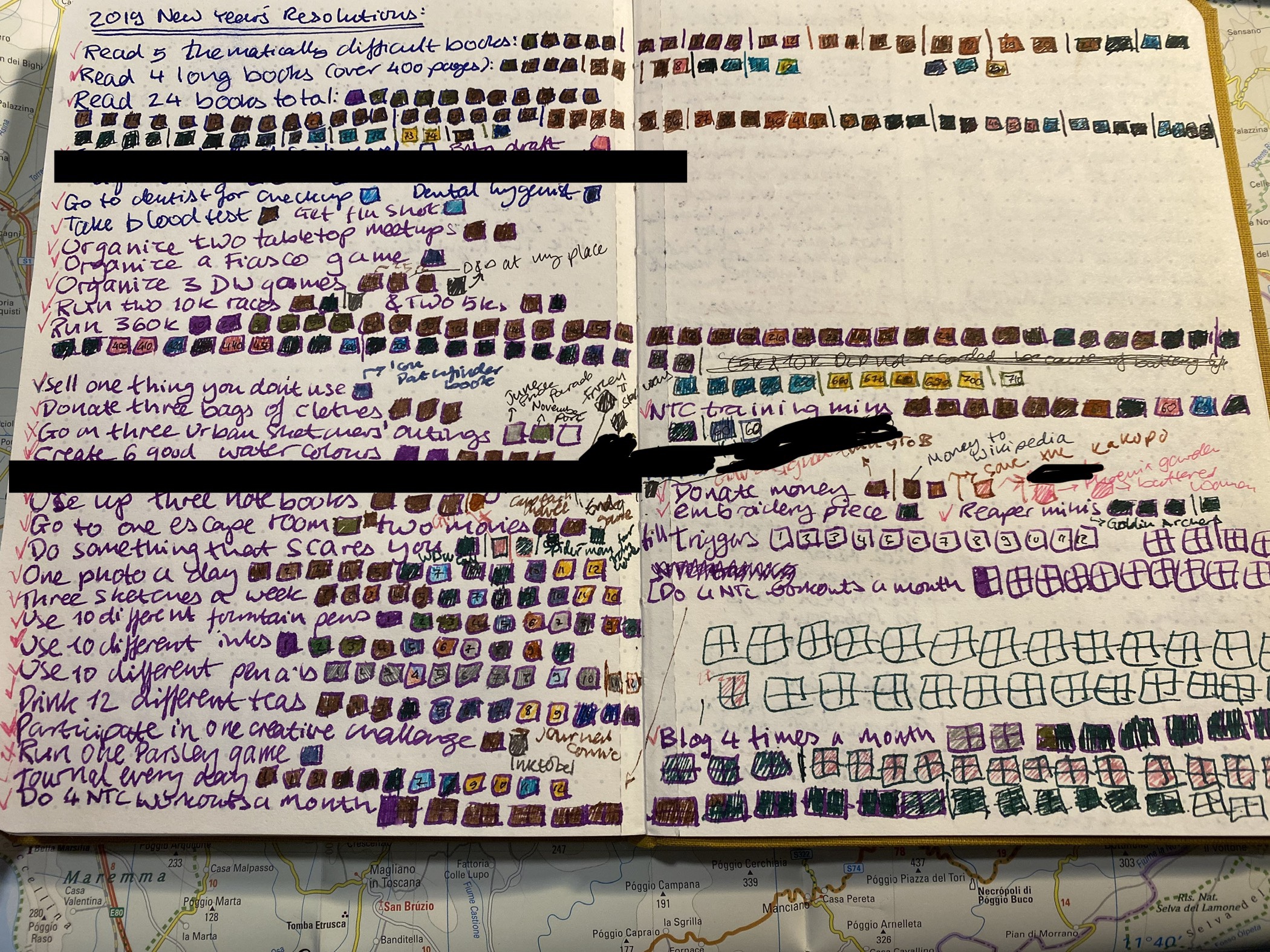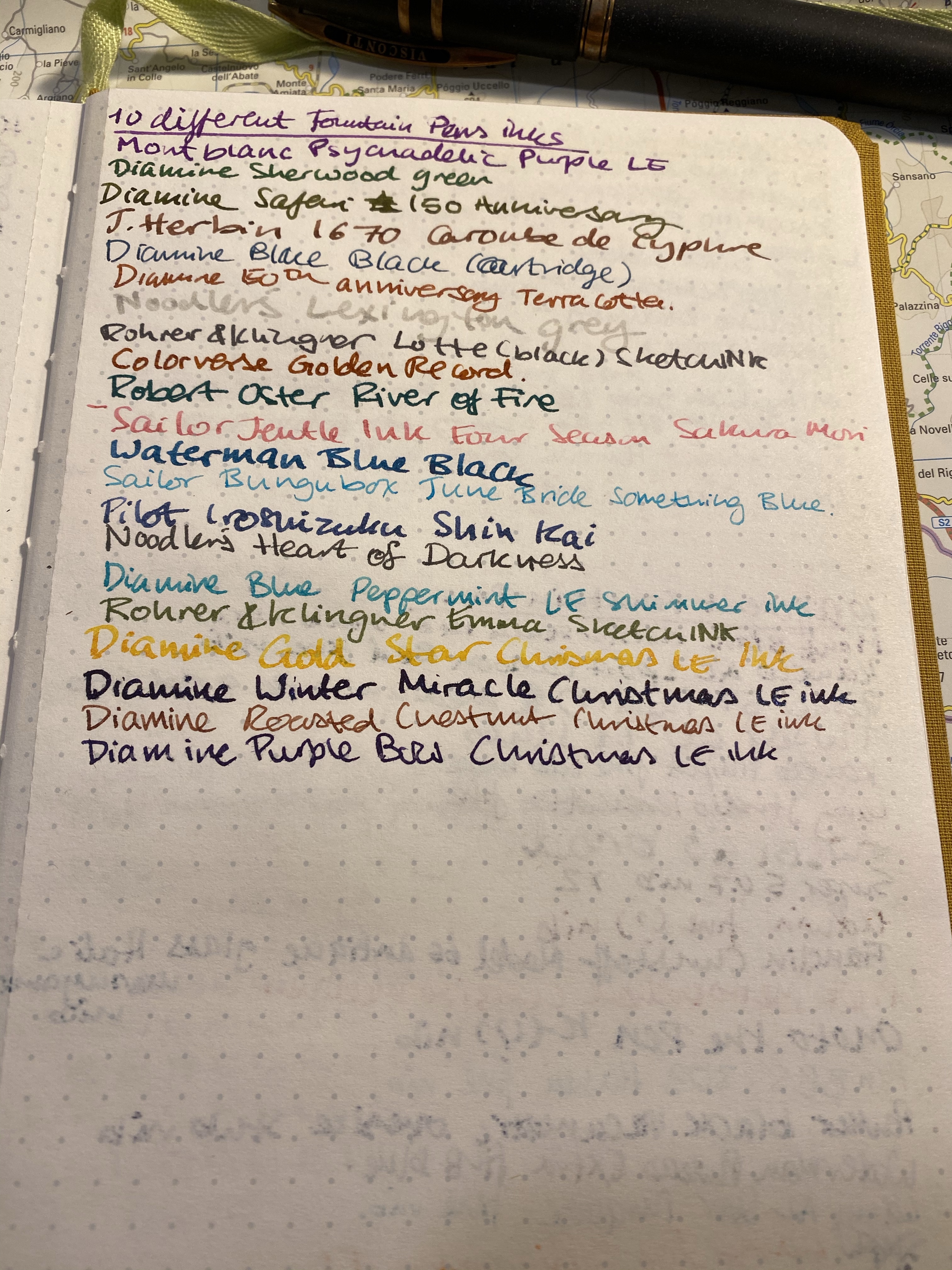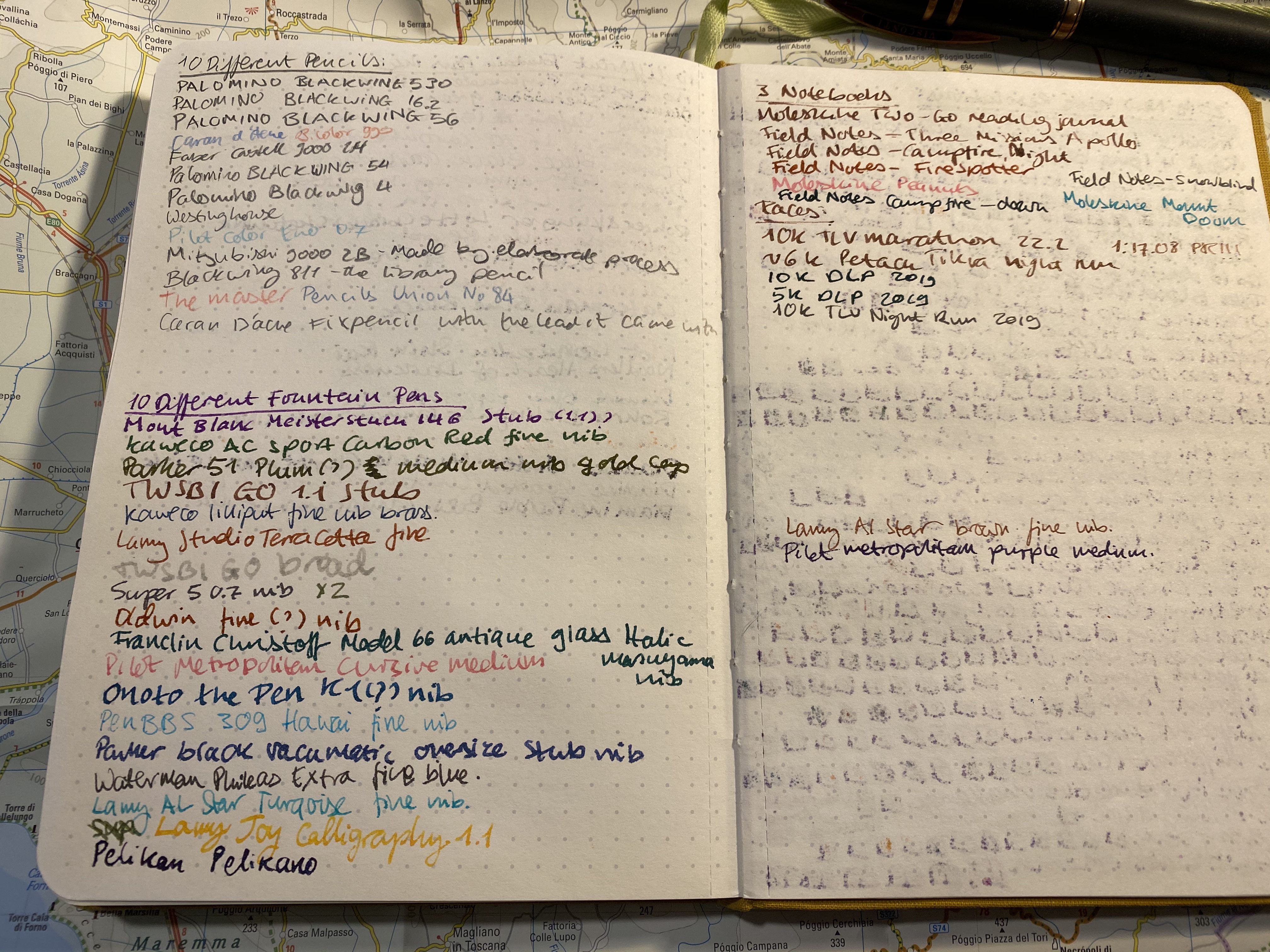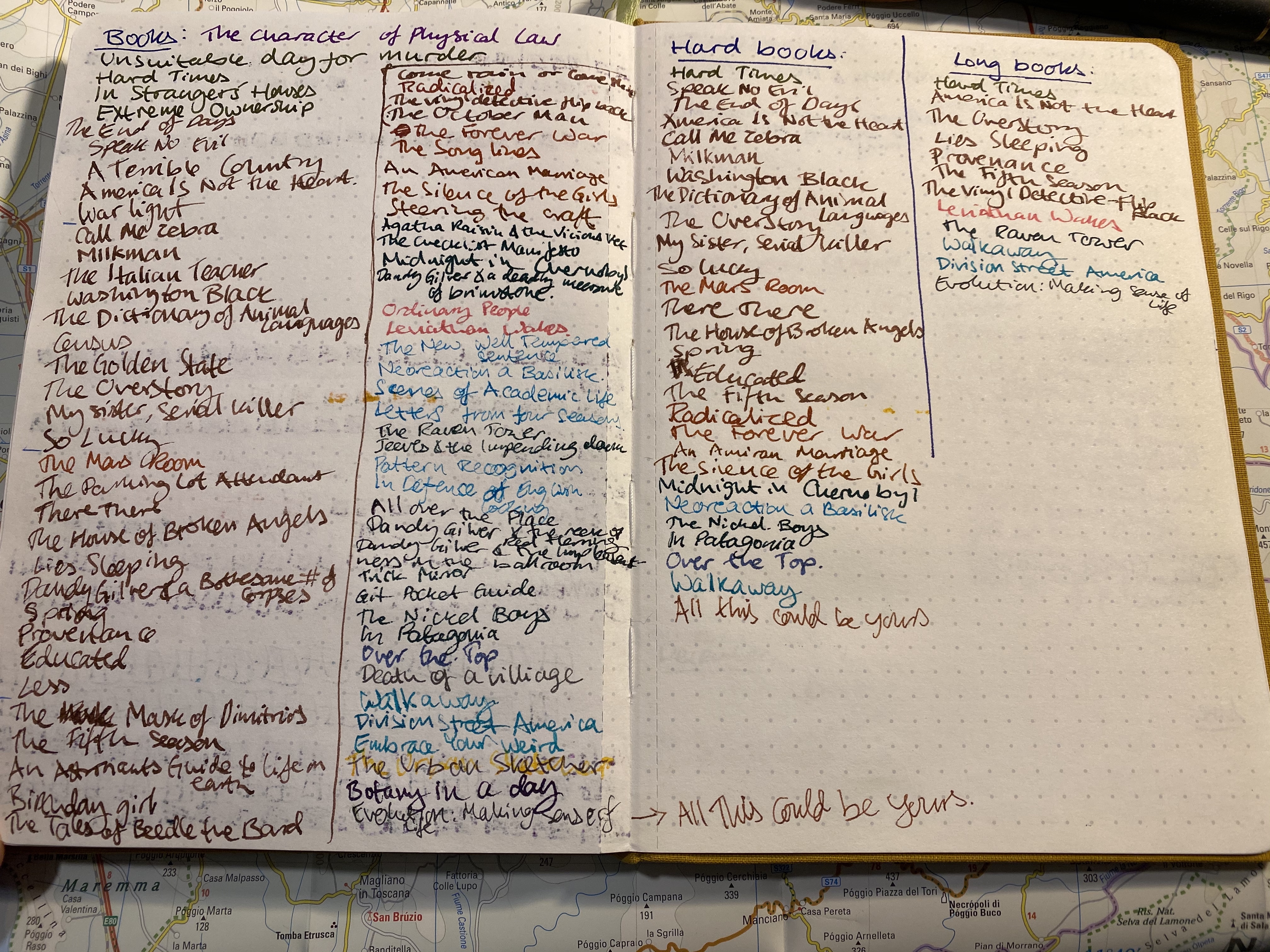New Year’s Resolutions Update
So back in the beginning of February I published a post about how I use my notebooks to manage my “New Year’s Resolutions” (i.e. yearly goals) in the hope that it will help people craft SMART goals for themselves that they can actually achieve. I explained in that post that I use a “stretch goal system” that allows me to hit my goals if I put in some basic regular effort into them, and then push myself gradually as I see how the year develops. For each “stretchable” goal I tailor the stretch goals based on my performance in previous years, and based on where I want to put more effort in any given year.
I wrote these goals at the end of 2019, and then, by the end of February and the beginning of March Covid-19 turned my life upside down. More and more restrictive “stay at home” directives have been issued, my travel plans were cancelled, I cancelled my participation in one 10k race, and my participation in the Disneyworld Star Wars Rival Run 5k and 10k races was cancelled, my dentist cancelled my yearly checkup appointment, I started working from home, the last few weeks of my DevOps course moved to remote Zoom lessons, and my planned move to a DevOps team required a bigger struggle than I anticipated. Also, unrelated bad things happened in my family, because that’s how life is.
Never have my stretch goals or resolution planning been tested to such an extreme, and that includes the annus horribilis of 2018. So how did my resolutions fare?

Overall, better than I expected. Here’s the breakdown and some (hopefully helpful) thoughts:
Exercise goals: These were a mixed bag, but they could have been much worse. All my races were cancelled and it appears that there won’t be any races this year. This just means that I had to get back into Virtual Races, and I’ve enrolled into the Disney one (so expensive, but I decided to splurge because it looks like I’ll be saving a lot on racing fees). That will take care of some of my race goals, and I’ll just have to figure out one or two more to take care of the rest. My running at first really hit a snag because of the restrictive lockdown, so I had to learn to run in really tight circles. The plus side? I managed to break my 5k record, and I’m challenging myself to run hills more. My NTC workouts got a huge boost because I’ve been staying at home and Nike has been killing it with some great workouts lately. After the first two weeks of lockdown depression, alone and away from my family, I realized that not exercising was practically killing me. So I’m running and training every single day now, no matter what. I highly recommend the NTC app: it’s free, has great workouts, and a super friendly design.
Writing goals: These took the biggest hit, because of the terribleness of things around here and in the world, and because until April I was swamped with DevOps course work. I’m forcing myself back to writing, and it has been slow, but hopefully it will pick up.
Reading goals: I’ve managed these the best, despite everything, and it’s mostly because reading has been a blessed escape during my darkest hours. I can still completely disappear into a book, and even terrible books give me things other than current affairs to be mad about.
Drawing goals: These also initially took a hit, but I’ve put some effort into them, and with ideas like my “Vengeful Fortress” one I get a drawing, writing and a somewhat D&D-esque game all in one. My drawing classes have been on hiatus since March, and I have no idea when they’ll return.
“Using my stuff” goals: In March and April things got worrying job-wise, so I put shopping on hiatus, and I’m even now careful about stationery shopping sprees. My notebook use needed some rethinking as I started working from home, but I’m back on track now, and using a lot more of the stuff that I’ve purchased. The only downside is that some of my stuff is at work, and right now I have no way of getting to it.
Journaling goals: This has been a rollercoaster in April and this month as well, partly because I was swamped and partly because I was too depressed to write. Trying to get back on track and deal with the feelings of those days that I’ve missed now.
Social goals: These are the only goals that I’m going to utterly have to rethink. Some of them have moved online (board games, meetups), others will just have to be postponed to later this year or to next year.
I’m trying not to be too hard one myself, but also challenge myself to get things done. Past me thought these goals were important, and present me still thinks most of them are. Where an extra effort or some extra creativity needs to happen I’m trying to make that more conscious effort. I’ll see by the end of summer where things shape out and re-tailor everything for what looks to be a difficult winter.
Keep moving, keep looking ahead, take care of yourself and your loved ones, stay at home, and be kind to yourself.














